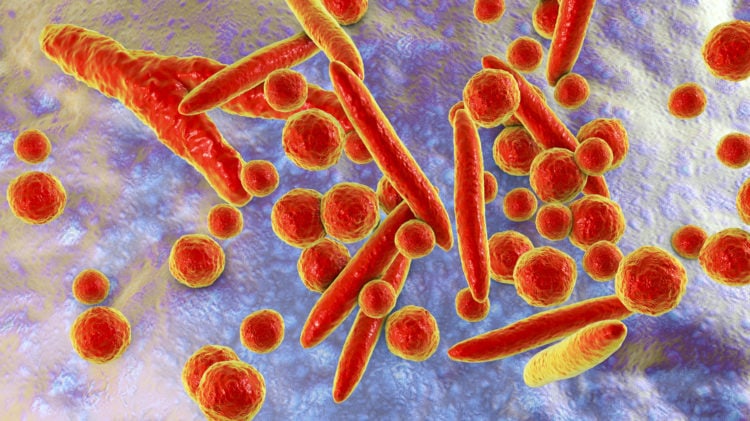Mycoplasma genitalium is an STI you’ve probably never heard of. I definitely hadn’t heard about it prior to writing this piece. After all it sort of sounds closer to having micro genitals than it does an actual medical condition.
Part of the reason you probably haven’t heard about it, is because it isn’t usually covered in standard sexual health tests. Whereas commonly known STIs like chlamydia, gonnorhea, syphilis and HIV seem to be on posters everywhere, mycoplasma genitalium isn’t.
One of the reasons it’s less well known is because it’s harder to detect. It has different biological markers and some strains of it have become resistant to antibiotics. Not every sexual health clinic will test for it and generally it’s more likely to be picked up if you go privately.
What is mycoplasma genitalium?
Mycoplasma genitalium is an STI which is the smallest bacterium known to be able to divide its’ cells and replicate. The bacteria is typically found inside the cells that form the urinary and genital tracts in both men and women.
The MG cells though can also be found in the rectum and even the lungs. Normally, it’s transmitted through genital-to-genital contact during unprotected sex. You’re most at risk during unprotected oral sex but can also catch MG through vaginal and anal intercourse.
To date, it has usually affected non-Caucasian people more and is more common amongst younger people. Mycoplasma genitalium often occurs alongside other similar STIs like chlamydia and so could be misdiagnosed.
When it comes to avoiding MG, practising safe sex is always the best way to stay healthy. The biggest risk of catching MG is through unprotected oral sex. It’s safest to have oral sex when you use dental dams and condoms.
Symptoms
When it comes to any STI, it usually helps to know what the symptoms are. With mycoplasma genitalium, it can be a bit harder to spot the symptoms when they’re there and it’s easy to mistake it for more common conditions like chlamydia.
A lot of people don’t show any symptoms when they have MG. Which is partly why it’s so hard to pin it down. The main things you should watch out for are:
- pain when you pee
- discharge from the urethra (the hole you pee out of)
- irritation and pain around your penis
Women can experience symptoms of MG too and it’s important your girlfriend also watches out for any of the following:
- vaginal discharge
- pelvic pain
- bleeding after intercourse
- bleeding between periods
MG is becoming an increasingly common STI, partly due to it often not showing symptoms but also due to a lack of testing. For Adult Industry professionals, it’s something they’re more likely to be aware of due to going for regular tests between shoots.
Complications of mycoplasma
If you have mycoplasma genitalium and don’t know about it, it can have long term complications. The sheer lack of symptoms and lack of publicity means it’s an STI that many people don’t know they have.
In men and women, it has links to sexually associated reactive arthritis. This is a form of arthritis triggered by the infection itself. As well as having implications on fertility prospects for both genders.
For men it can also lead to testicular pain with swelling being common due to inflammation of the epididymitis. If a man develops epidymitis, this infection affects the tube which stores sperm and can lead to fertility problems if left untreated. Ordinarily though, a simple course of antibiotics given by your doctor will stop any infection in your tubes.
The possible complications for women are worse if she catches it from her partner. It has links to:
- delivering a baby prematurely
- increased risk of having a miscarriage
- stillbirths
- infertility
- Pelvic Inflammatory Disease (which damages her fallopian tubes and increases the risk of an ectopic pregnancy)
Tests & Mycoplasma Treatment
Like most of the common STIs, MG is relatively easy to test for and treat. A simple urine test is efficient to collect a sample of urine which will show if there’s MG bacteria present. If you might have MG, your partner(s) should also go for a test.
After treatment, experts advise to not have sex until 5 weeks after the start of treatment. When you conclude treatment, you can have another test to make sure you’re clear.
Doctors precribe these antibiotics to treat mycoplasma.
- azithromycin (one large dose or smaller doses over 3 to 5 days)
- doxycycline for 7 days followed by azithromycin for 3 days
- moxifloxacin for 10 to 14 days
The next superbug of STIs?
Medical experts worry that mycoplasma genitalium could become a superbug due to an increase in levels of antibiotic resistance. The lack of symptoms have led to doctors calling it a ‘stealth superbug.’
While most people respond well to the antibiotics used, there has been evidence to show an increase in global resistance to azithromycin. Resistance levels have gone from 30-100%. Experts estimate UK resistance levels to MG at around 40%.
Moxifloxacin still works well in Europe, but it is less effective in Asia-Pacific. To prevent resistance in Europe, doctors prescribe moxifloxacin sparingly. Only doxycycline (which is effective in 30% to 40% of cases), pristinamycin and minocycline are alternative options.
Even when you think both you and your partner are clean, there can be unknown STIs present which don’t show any symptoms. When you change partners, you should get a screening done at your local sexual health clinic. Go for a routine check even when you only have one regular partner. Simply because an STD can remain undetected for weeks, months and years after infection.
While sexual health tests are usually accurate, they can sometimes miss infections so keeping an eye on your health is always safest. Think of it as an MOT for your cock – playing safe and checking all is good will keep you ticking on happily.

